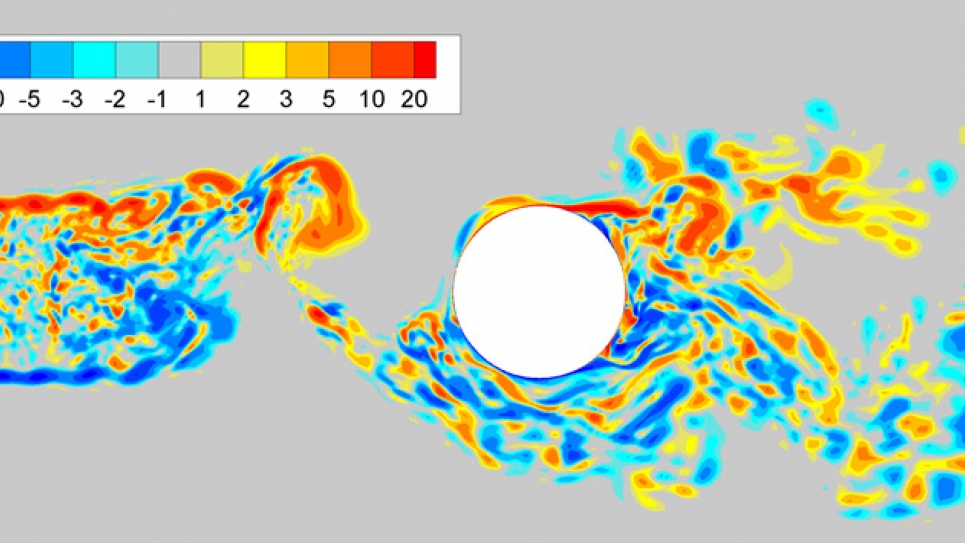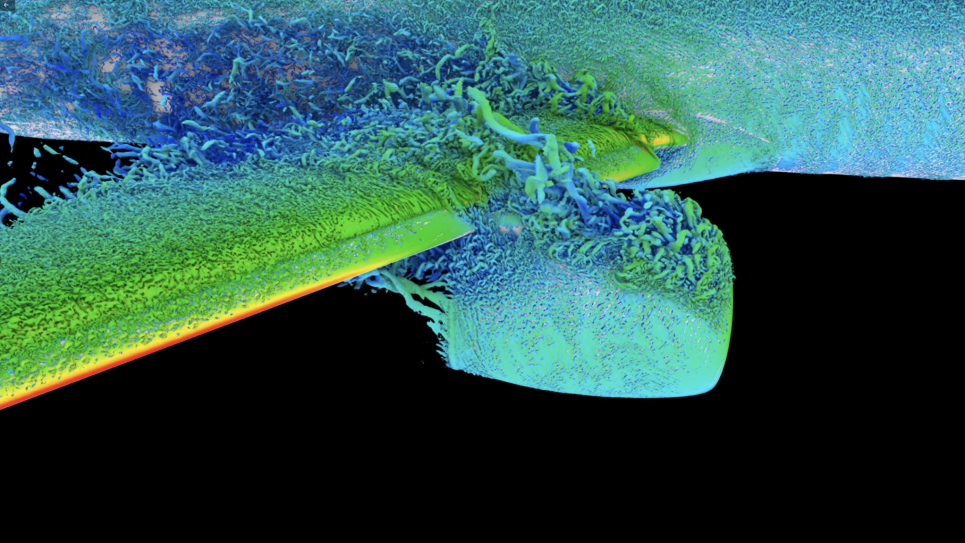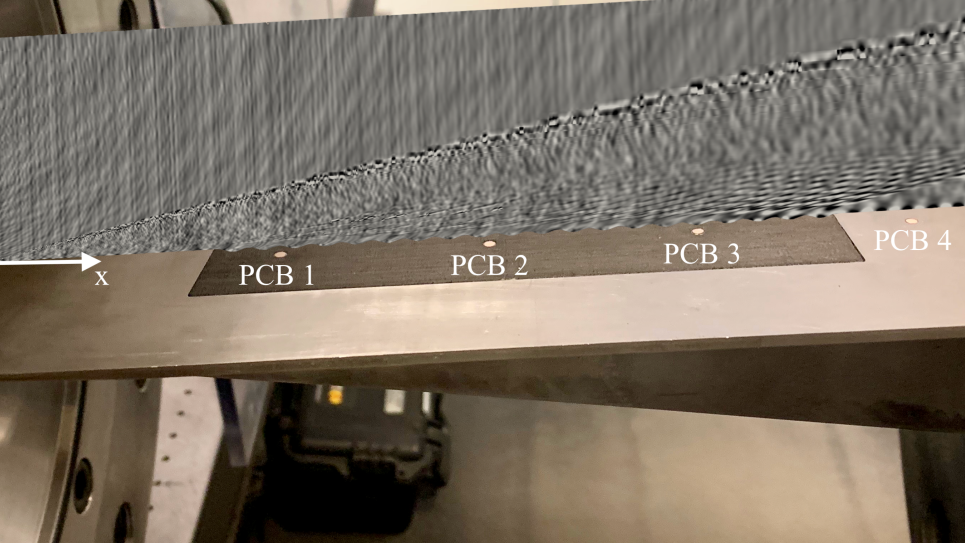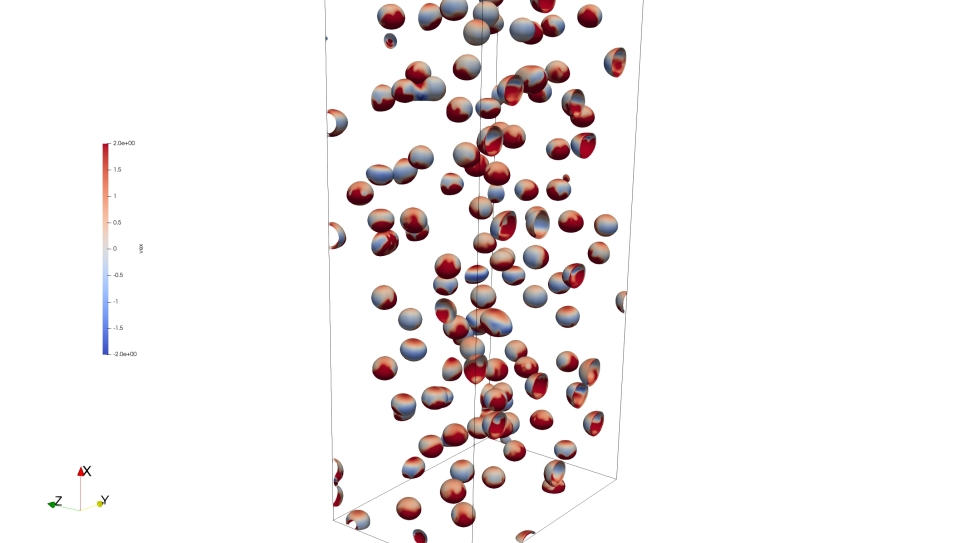
Detached-Eddy Simulations and Noise Predictions for Tandem Cylinders
Researchers led by Philippe Spalart at Boeing are conducting a thorough numerical investigation of the turbulence and noise generated by Tandem Cylinders, a prime test case for detailed comparisons among computational fluid dynamics (CFD) approaches and with NASA experiments. It involves massive separation, the impingement of turbulence on a solid body, and the resulting noise. These features are typical of various applications (aircraft landing gear, wind turbines, bridges, heat exchangers, and buildings).
The simulations reflect the state of the art in turbulence-resolving CFD approaches to massively separated flows. The ALCF’s IBM Blue Gene/P allows sufficiently fine grids (up to 60 million cells) and wide domains (up to 16-cylinder diameters), with either periodic or free-slip boundary conditions in the lateral direction. The objective is to gain insight into the fundamental problem of low-Mach-number aero-acoustic computations. Very low Mach numbers are notorious for affecting CFD convergence; furthermore, the acoustic energy is minute.
The accuracy of the simulations is confirmed by the Power Spectral Density of velocity at a point in the wake: the inertial range of frequencies with exponent -5/3 is a decade long, revealing the turbulent energy cascade. The mean and unsteady wall pressures also compare well with experiments.
A central issue of aero-acoustics for low-Mach-number flows is the accuracy of noise predictions made using only the solid-surface terms in the Ffowcs-Williams-Hawkings (FWH) integral. It is widely assumed that this convenient simplification suggested by Curle is adequate for airframe noise. The researchers’ work on a landing gear indicated, however, that it is not adequate even at a Mach number as low as 0.115; this is confirmed in the present study at Mach 0.1285 for the higher frequencies. This unexpected finding needs to be explored, including the level of numerical errors, first inside the turbulence and then in the radiated noise, via the FWH equation.


